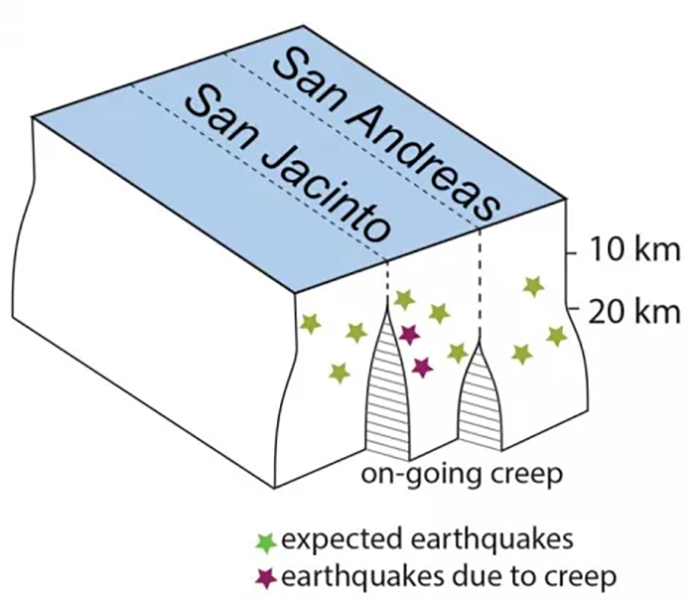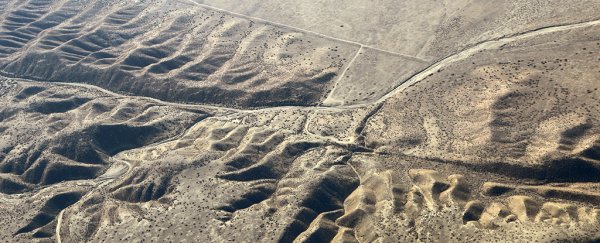A new study looking at the San Andreas and San Jacinto fault lines in California has uncovered some strange and unexpected types of movement deep below ground – movement that could make the next big earthquake all that more difficult to predict.
The movement has been dubbed "deep creep", and it could help explain unusual ruptures where rock sections are sliding vertically down past each other, almost like a geological wave, rather than sliding past each other horizontally.
Researchers from the University of Massachusetts Amherst have put together a 3D model, based on readings from thousands of small quakes, to try and match the seismic data.
Ultimately, it's hoped the new models might help experts better predict when and where the next major earthquakes could be - which is pretty important, given that California is thought to be potentially overdue for the next "big one".
"These little earthquakes are a really rich data set to work with, and going forward if we pay more attention than we have in the past to the details they are telling us, we can learn more about active fault behaviour that will help us better understand the loading that leads up to large damaging earthquakes," says one of the researchers, Michele Cooke.
The fault where blocks slide past each other – technically a strike-slip fault – is the most common type. The vertical wave action, meanwhile, is known as an extending fault, because it does exactly that: it extends the fault lower.
Extending faults aren't often observed and only occur in a small area in this region. The new models help to explain why.
That brings us to the so-called "deep creep" – the models put forward by the researchers show how tectonic creep happening about 10 kilometres (6.2 miles) below the surface fit in with the extending faults that are occasionally appearing higher up.
 Deep creep in action. (UMass Amherst/Michele Cooke)
Deep creep in action. (UMass Amherst/Michele Cooke)
"I noticed that this basin was an extension in [long-term] models unlike the surrounding regions of strike-slip," says Cooke. "The extension was limited to within the basin just like the pattern of the anomalous extensional earthquakes."
"That gave me a clue that maybe those faults weren't locked as they should be."
Fault creep is usually detected with GPS readings, but the San Andreas and San Jacinto fault lines are too close together for this technique to work effectively. Deep creep has been happening and no one has been able to detect it, the researchers say, and it could be accounting for up to a third of the small quakes in the region.
All of this has an impact on fault loading calculations, and Cooke and her colleague Jennifer Beyer say our earthquake prediction models – which currently consider the faults in the region locked and creep-free – might need to be adapted.
While we wait for the next big earthquake to hit the region, the researchers point out, we can be using the regular smaller quakes to fine-tune the accuracy of our models. The energy and movement trapped underground may not be arranged the way we think it is.
Seismologist John Vidale from the Southern California Earthquake Center, who wasn't involved in the study, told Newsweek the new research was "quite well founded" but that the implications remained ambiguous.
In other words we're going to need to keep on studying the region closely to get a better idea of what might happen here next – and maybe deep creep might end up being a major part of those future forecasts.
"We don't want to wait around for the faults to move in a damaging earthquake, we want to take advantage of all the tinier earthquakes happening all the time in order to understand how the San Andreas and San Jacinto are loaded," says Cooke.
The research has been published in Geophysical Research Letters.
